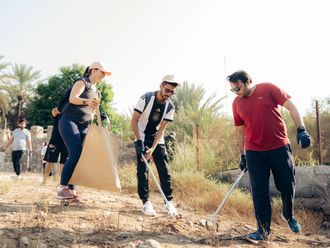Doctors have rejected claims made by hoax e-mails that a boy caught Aids in Dubai after eating a shawarma tainted by the blood of an infected cook.
One of the e-mails starts with a warning: "Dear All, beware of eating shawarma on the roadside."
It then goes on to tell the story of a 10-year old boy who was diagnosed with the deadly condition when he fell sick 15 days after eating a shawarma.
The letters say the cook had a nick in his finger, and while cutting the meat blood from the finger spread on the food.
According to experts, it generally takes six to 10 years from the point of infection to develop Aids if left untreated. "Aids is never transmitted by ingesting tainted blood," said one doctor at Zahra Hospital.
"Such blood will go straight to the intestines," she said. "You can't get Aids by eating at restaurants and cafeterias because gastric juices destroy the virus. Heat and air also kill it."
Another doctor said health checks are strict in the UAE, especially for workers in the food industry. "The blood tests will screen out people with HIV, Hepatitis and TB," she said.
A e-mail sent to Gulf News adds that the cook was himself unaware that he had Aids. It ended with a plea to "forward this message to your friends to make them aware".
Another doctor at Zulekha Hospital said Aids cannot be transmitted either by hugging, kissing or shaking hands.
In a move to make the news authentic, one of the e-mails mentions that a team from a well-known hospital in Dubai had investigated the case and found the cook had a cut on his finger and that his blood had spilt on to the shawarma.
A person can get Aids only when he receives HIV-contaminated blood in a blood transfusion, or is exposed to needles that are contaminated with the infected blood in the process of injecting drugs.
Aids can be transmitted when you are injured with blood-contaminated needles, syringes, razor blades or other sharp instruments.
Aids myths
- Some of the myths about Aids are that you can get infected by sharing water, food, plates, cups, spoons and toilet seats with an HIV-infected individual, or when swimming in pools.
- Other myths are that it takes the airborne routes such as coughing, sneezing, talking or laughing.










